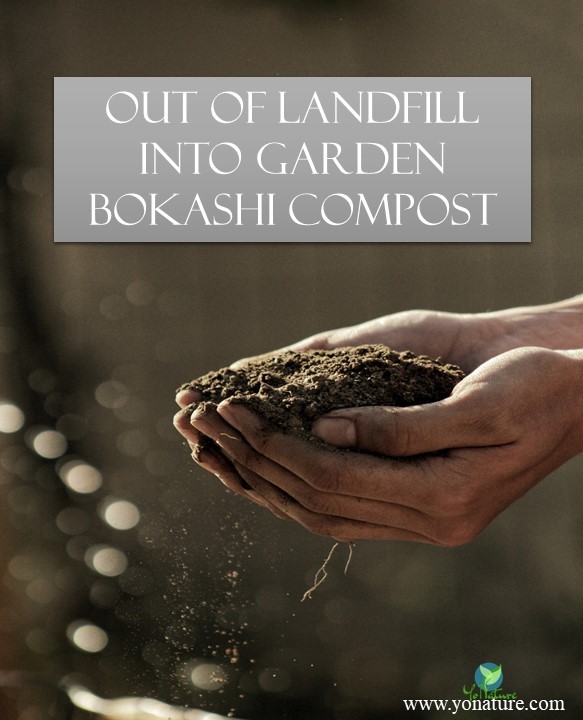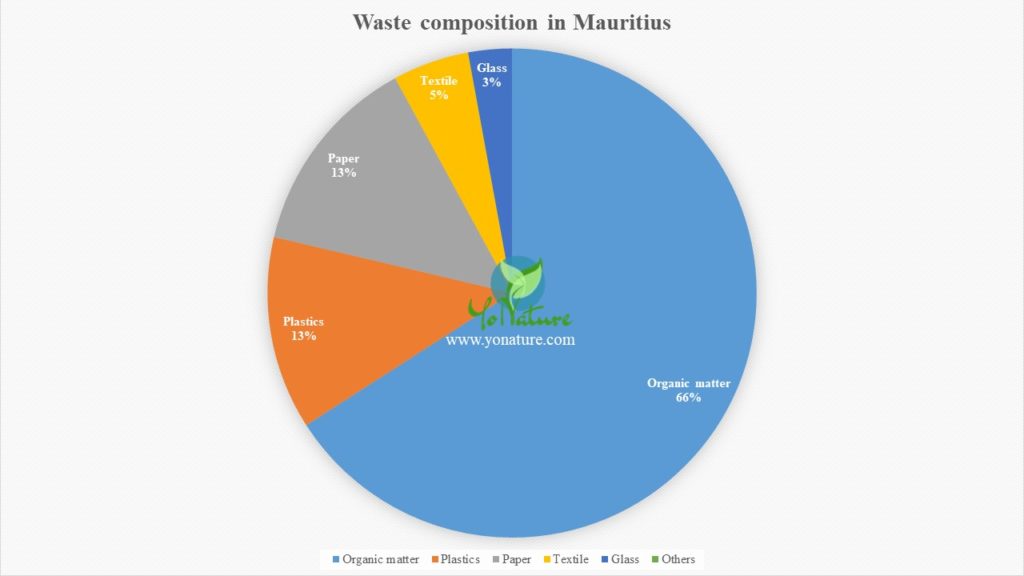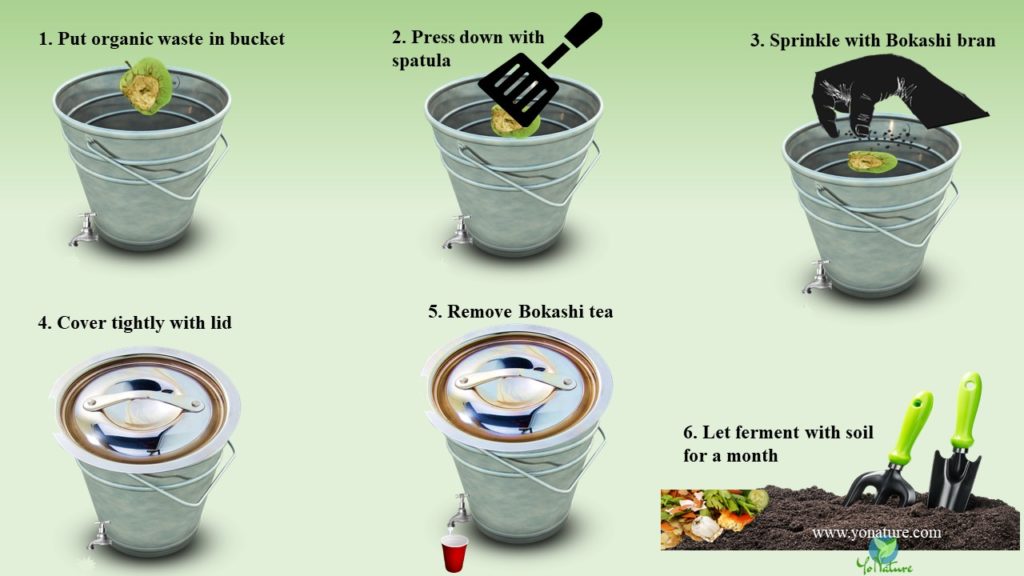Bokashi compost – Decreasing stress on our landfill

In awe and sometimes, fear, when we were kids, we loved to part windows’ curtains and watch furtively as waste trunks swallowed the stuff of local bins. Garden leaves, torn clothes, plastic bags, old batteries, broken china, you name it, everything that is useless to us goes into the trash bin. But have you ever wondered what exactly happens to all the waste we produce?
What happens to our waste?
Regretfully here in Mauritius, there are no recycling bins for different waste types (except hotels, few schools and public areas) and so plastics, as well as leftover food, are thrown into the same bins.
The different types of waste produced on the island are as follows: 64% organic matter, 12.4% plastics, 13% paper, 4.9% textile, 2.8% glass and the rest 3.1% is miscellaneous waste.

This garbage is collected by the local municipalities and then sent to transfer stations which are located at
- Poudre d’or
- Roche Bois
- La Chaumiere
- La Brasserie
- La Laura.
The trash is compacted and sent to the only landfill on the island, Mare Chicose, on bigger trunks.
Landfilling at Mare Chicose
Located in the district of Grand Port, the Mare Chicose landfill began its operation in 1997 and has been in use since then. To date, 6 million tons of waste has been disposed of in the different cells as safely as possible. A landfill is basically a huge hole dug in the ground to store waste. The bottom of the landfill is covered with composite soil and a plastic film to minimize leaching from the rotten materials. Every now and then, as waste accumulates, the landfill site is covered with soil or clay and plastic before more waste is dumped onto it.
Leached materials during decay accumulate in pools; they are treated as sewage and are disposed of as waste water. Methane, a byproduct of waste decomposition, is released during the process. Since it is a dangerous gas that contributes to global warming, it is either flared or used to produce electricity [2]. Eventually, when landfills become full, they are covered with soil and plastic and then more soil is thrown onto them to grow plants.
Tiny island, massive waste problem
Mauritius, 2,040 km2 in size with a population of 1.3 million people, produces some 1,200 tons of waste per day [1]. This is enormous. The government spends Rs1 billion per year in waste collection, transfer and disposal. Mare Chicose is estimated to be full by 2018-2019. While a private compost plant and several recycling centers try to keep at bay the waste disposal problem, touristic activity, urbanization and per capita consumption don’t seem to decrease anytime now.
Landfill alternative? Bokashi compost
Managing waste on remote islands is not free from worries, especially for a rapidly developing nation like Mauritius. Sri Lanka, with a population of 21 million people, is one of the most waste generating islands in the world, producing 7000MT of solid waste daily [3]. Developed countries like Sweden, on the other hand, has taken the bull by the horns; less than 1% of the total waste produced goes to landfills [4].
It is of utmost importance to come up with sustainable ways to slay this dragon since we are a touristic destination known for beautiful beaches and not littered gullies. A very interesting and feasible project is the implementation of Bokashi composting to reduce the amount of waste reaching the landfill. Winners of the Green Project organized by Emtel Ltd in 2008, science students of the UoM proposed the use of Bokashi composting to address the waste matter right from the root.
What is Bokashi composting?
The Bokashi bran, developed by Dr Teruo Higa in Japan in the 70s, is a mixture of Effective Microbes, food medium for these microorganisms to feed on (like raw sugar or molasses) kept at a low pH (3-4). Bokashi is a Japanese word for gradation – a series of successive changes. What happens during the process is that the microbes break down the waste through a series of anaerobic reactions (absence of oxygen) within a short time period and more efficiently as compared to normal composting.
The Effective Microbes include photosynthetic bacteria, lactic acid bacteria, yeast and actinomyces. In fact, these are common microbes that are found all over the world and hence the popularity of Bokashi compost from Zimbabwe to Cuba. The original set of EM isolated by Dr Higa can be bought and used but since there are environmental and health threats to importing microbes, country-specific isolation of these strains ensures no such issues.
Asians have used this method to enhance agricultural production for years because the results are outstanding. Worldwide it has been recorded that the use of Bokashi compost not only produces better yields but also enhances the soil quality. There have been 40 plus published studies in scientific journals proving its efficiency though there are skeptics who disagree on its beneficial properties.
DIY compost
A simple Bokashi bucket (or a DIY once you get the idea what you need) is used to ferment the raw materials like rotten fruits, vegetables’ peels, dairy products and even meat. They are pressed down with a spatula, the Bokashi bran is spread on the materials, and then the vessel is tightly closed to prevent air from getting in. Every 2-3 days, the Bokashi tea is removed through the tap as too much moisture prevents proper chemical reactions to take place and it is used to water plants. The same repeated procedure goes on until the bucket is full.
The contents are finally mixed with garden soil or compost and allowed to ferment for a month, and then your leftover compost is ready.

Bokashi compost for environmental management
Why should we consider Bokashi compost as an alternative waste management means? Simply because it reduces the total amount of waste reaching our landfill by 64% (if all organic matter is handled in this way). The use of Bokashi bran in Mauritius is a very good way to diverge the amount of organic matter reaching our landfill to our own gardens. Normal composting must be done outdoors and includes mostly greens and eggshells; Bokashi, on the other hand, degrades dairy products as well as meat. It is ideal as a kitchen compost maker since all leftover food and peels can just be thrown in the Bokashi bucket to ferment instead of going into the trash can.
The only concern that we must handle is the development of the local microbial strains to use for the Bokashi bran. Pilot projects can be done in schools since these are great places where food goes to waste in large amounts every day; the same applies to hotels and other public areas. Eventually, Bokashi composting can be implemented on a national scale just like for the solar panels.
References:
- Government of Mauritius, The Solid Waste Management Division. Solid waste management in Mauritius. Available at http://environment.govmu.org/English/Pages/swmd/SWMD-Solid-Waste-In-Mauritius.aspx [Accessed on 25 October 2018]
- Government of Mauritius, The Solid Waste Management Division. Waste disposal sites in Mauritius – transfer stations and landfill. Available at http://environment.govmu.org/English/Pages/swmd/SWMD-Waste-Disposal-Sites.aspx [Accessed on 25 October 2018]
- Environmental Foundation Limited. Status of waste management in Sri Lanka. [online] Available at http://efl.lk/v3/2017/06/14/status-waste-management-sri-lanka/ [Accessed on 25 October 2018]
- Less than 1% of Sweden’s trash ends up in landfills. [online] Available at https://www.iflscience.com/environment/less-1-swedens-trash-ends-landfills/ [Accessed on 25 October 2018]

Pingback: Negative impacts of humans on the environment - Yo Nature
Pingback: 5 reasons why ecotourism is better than traditional tourism - Yo Nature
Pingback: Mesothelioma: Link between Asbestos and Non-Asbestos Materials - Yo Nature
Pingback: Positive impacts of tourism on the environment - Yo Nature
Pingback: How to handle the waste problem on small islands - Yo Nature